A dry garden, also known as a gravel garden, does not require much water. In fact, this type of garden is rarely watered. It is an ecosystem that works best for drought-resistant plants. People usually complete with a gravel mulch.
This garden is perfect for those who live in an area with very poor, free-draining soil and low rain intensity. It is also a top-notch solution for those who do not have much time to take care of plants. Here we will learn more about 10 Dry Garden improvement projects you can learn, follow, adopt, and adjust according to your space and needs. As always, Simphome presents you with the list.
10 Dry Garden Improvement Projects Video:
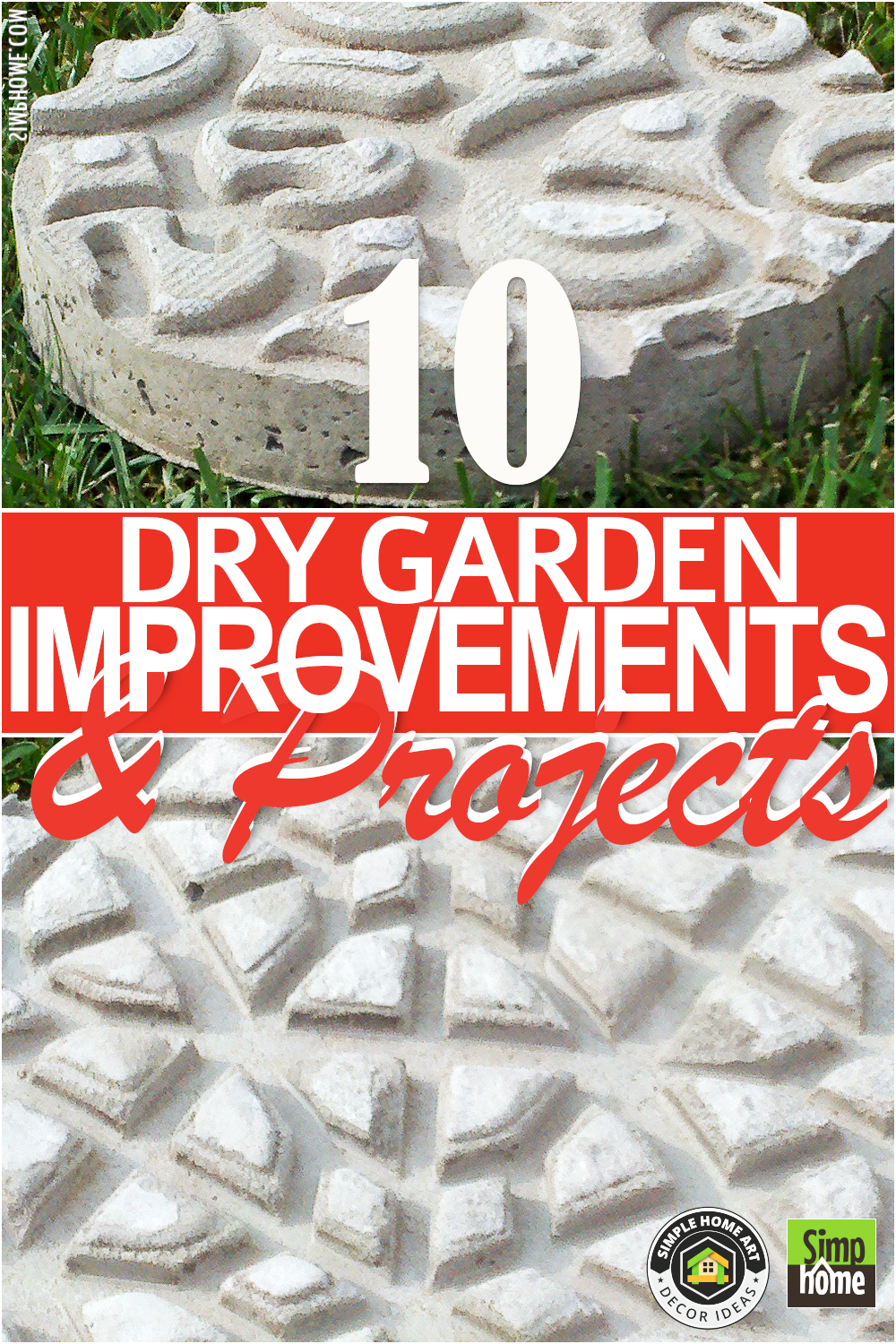
10. Low-Maintenance Dry Garden Makeover Ideas
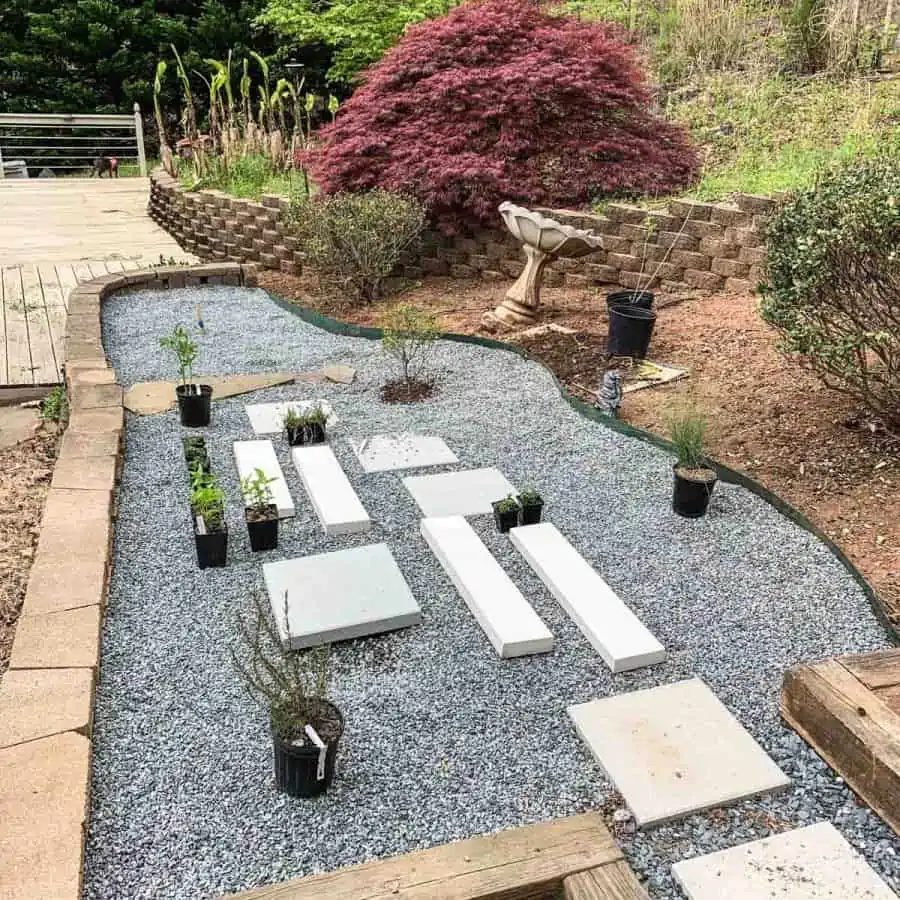 Are you considering building a garden in your spare outdoor area with high sunlight intensity but don’t have a large budget to spare to conduct your experiment? Then, the first idea is our recommendations.
Are you considering building a garden in your spare outdoor area with high sunlight intensity but don’t have a large budget to spare to conduct your experiment? Then, the first idea is our recommendations.
To build this type of garden, you need to get the materials. There are relatively small rounded gravel, square point shovel, bow rake, edging, wood stakes, rubber mallet, tape, wheelbarrow, level, and absolutely the thing you shouldn’t miss: plants.
Then, let’s get started! First, you need to create a dry garden design. This would help you to build and visualize your dream garden. The second step, prepare the area for the gravel garden by removing all weeds and vegetation. Although the gravel will do its job of preventing weeds from increasing, you still need to do your role.
Once the weeds are gone, and the area is level, you add the gravel. Covering the area with 4 to 5 inches of gravel is highly advisable. This way, the weeds will not have the chance to grow, but you can still grow plants. Next, lay the concrete pavers or stepping stones on the gravel, and plant the vegetation.
9. Create a Mesmerizing Look with a Dry Stream
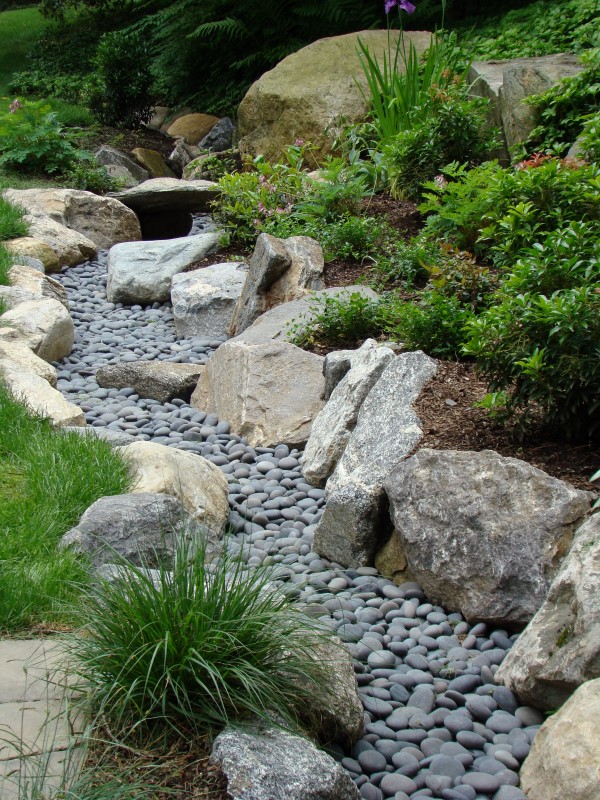 Adding a dry stream in your dry garden is a great idea since this would improve your garden. Moreover, it can help to catch runoff and prevent drainage issues.
Adding a dry stream in your dry garden is a great idea since this would improve your garden. Moreover, it can help to catch runoff and prevent drainage issues.
To build this element, consider the area, the rocks used, and the overall conditions. Then, you can lay out a slightly curving trench and make it wider at certain sections.
Next, add water pools into the dry creek bed. Then, put some filter fabric following the entire trench. Finally, you only need to spread the gravel over the dry creek bed.
8. Grow Drought-Tolerant Trees and Shrubs
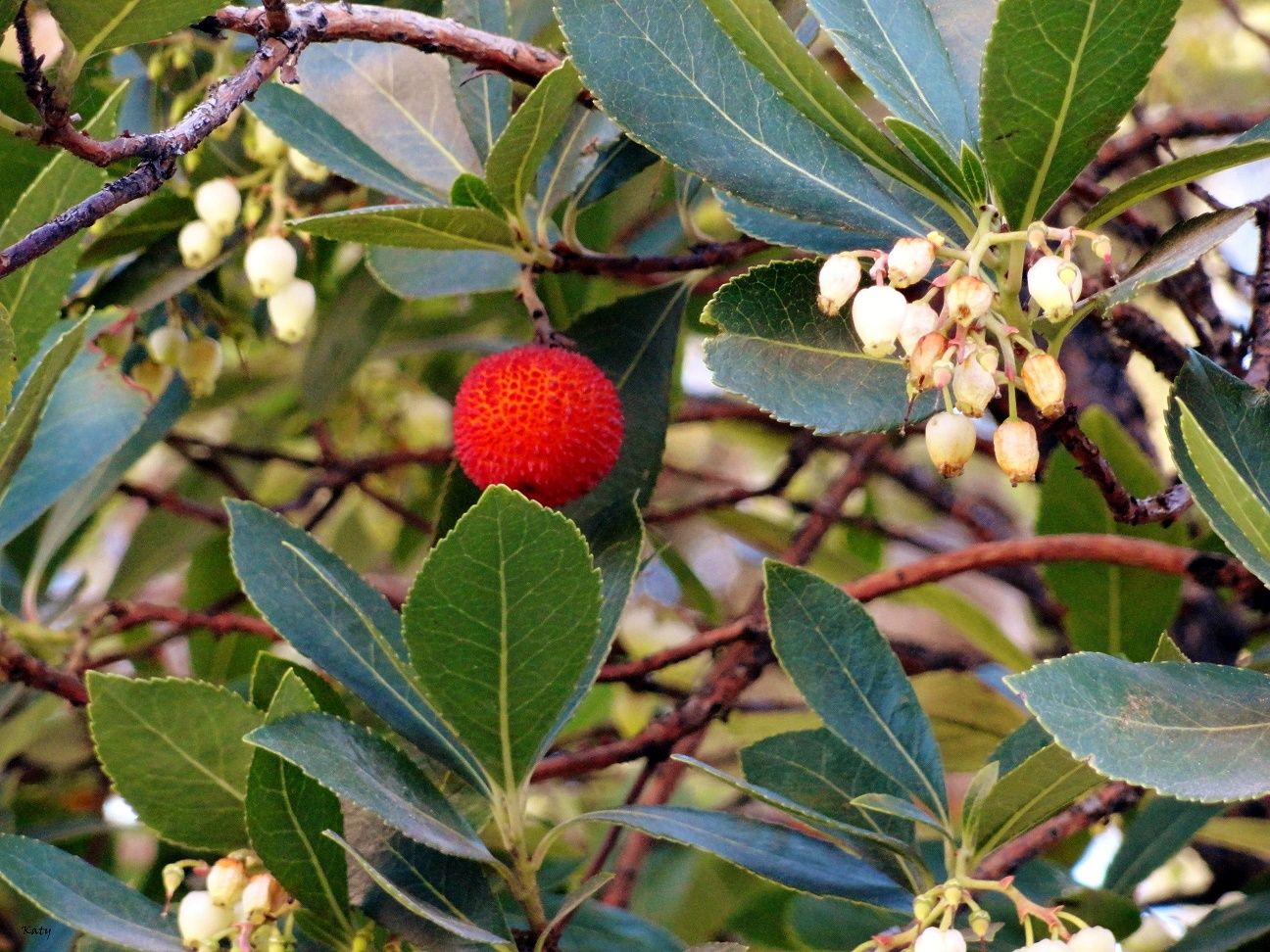 Try to combine low-water trees and shrubs into your dry garden. This will help you to enrich the ecosystem that you build. And sure, your garden won’t look boring as if it shows the same species of plants all over the area.
Try to combine low-water trees and shrubs into your dry garden. This will help you to enrich the ecosystem that you build. And sure, your garden won’t look boring as if it shows the same species of plants all over the area.
There are several recommended trees for your dry garden. You can grow downy oak (Quercus pubescens), evergreen Greek strawberry tree, or Arbutus andrachne, which has a beautiful color combination of cinnamon-colored peeling bark, dark green leaves, and small white urn-shaped flowers, and red fruits. Or the other options are strawberry tree, Arbutus × reyorum ‘Marina,’ and Cercidium’ Desert Museum.’
7. How to Create a new Zen with Bamboo Fountain
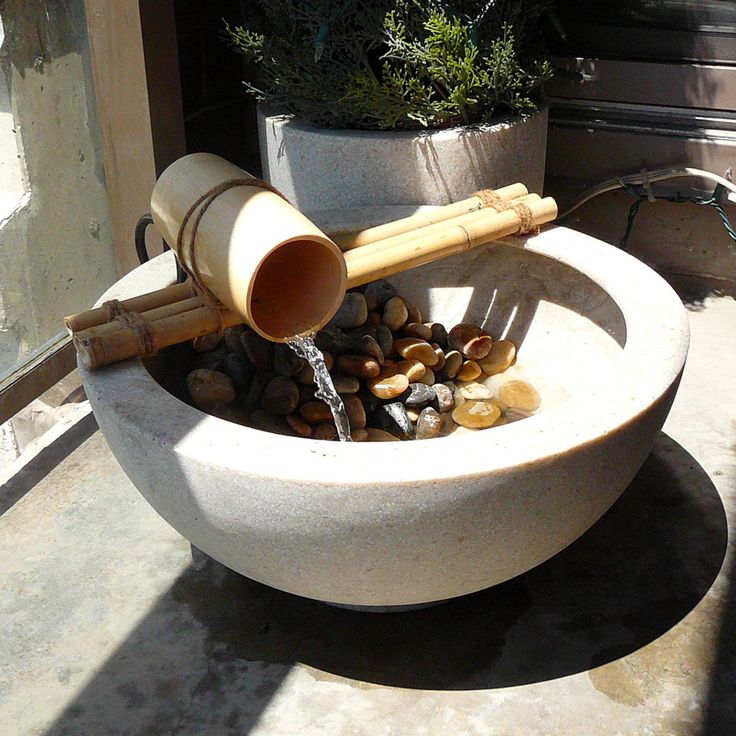 Adding a water feature in your dry garden is like an oasis in the desert. It will bring such a refreshing and calming atmosphere.
Adding a water feature in your dry garden is like an oasis in the desert. It will bring such a refreshing and calming atmosphere.
Try to create this easy DIY bamboo water fountain.
- First, get three or four 3/4-inch diameter bamboo pieces and bind them together with gardening twine.
- Then, get a larger or a tiki torch bamboo and cut one of the edges at a 45-degree angle. Drill a 3/8-inch hole in the bottom to insert a 3/8-inch flexible clear hose.
- Next, combine the hose and bamboo to create a graduated “adapter” at the pump nozzle (you do this in case your pump does not include an adapter).
- After that, fix the larger bamboo to the smaller one you bound together. Connect the pump and use river rocks to conceal it. Finally, sit back and relax while enjoying the soothing sound.
6. Incorporate an Unusual Patio
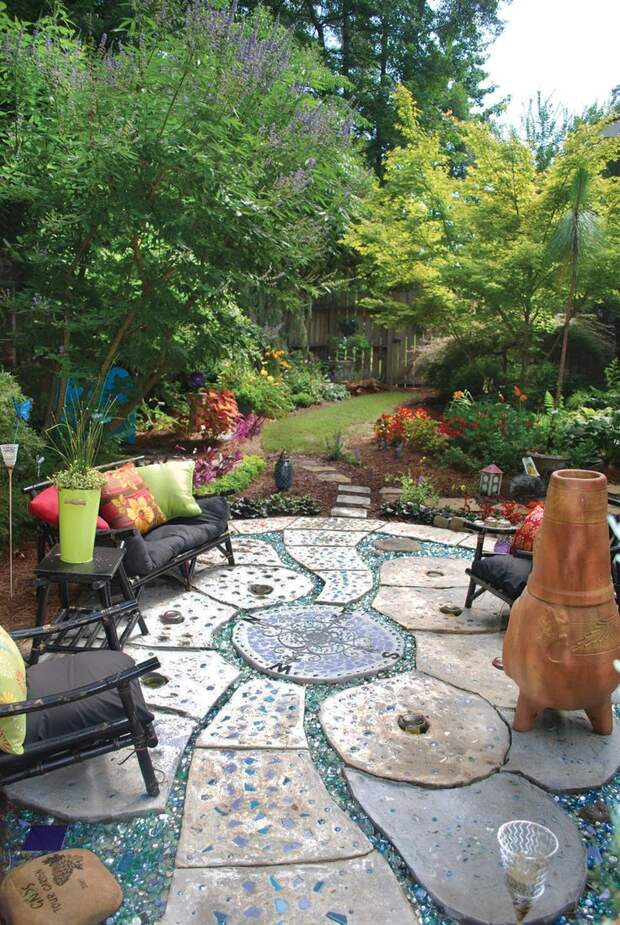
Then, define the patio’s edge using a rope and outline it using spray paint. Dig narrow trenches for the concrete forming the pavers. To make this work easier, you can water the ground to soften the soil.
Pour some concrete following the pattern. Then, apply the pebbles on its top as soon as possible. The pavers dry within a day, but you can’t step on them yet. Please wait for it for up to a few days.
5. Add New Pattern and Texture with DIY Stepping Stones
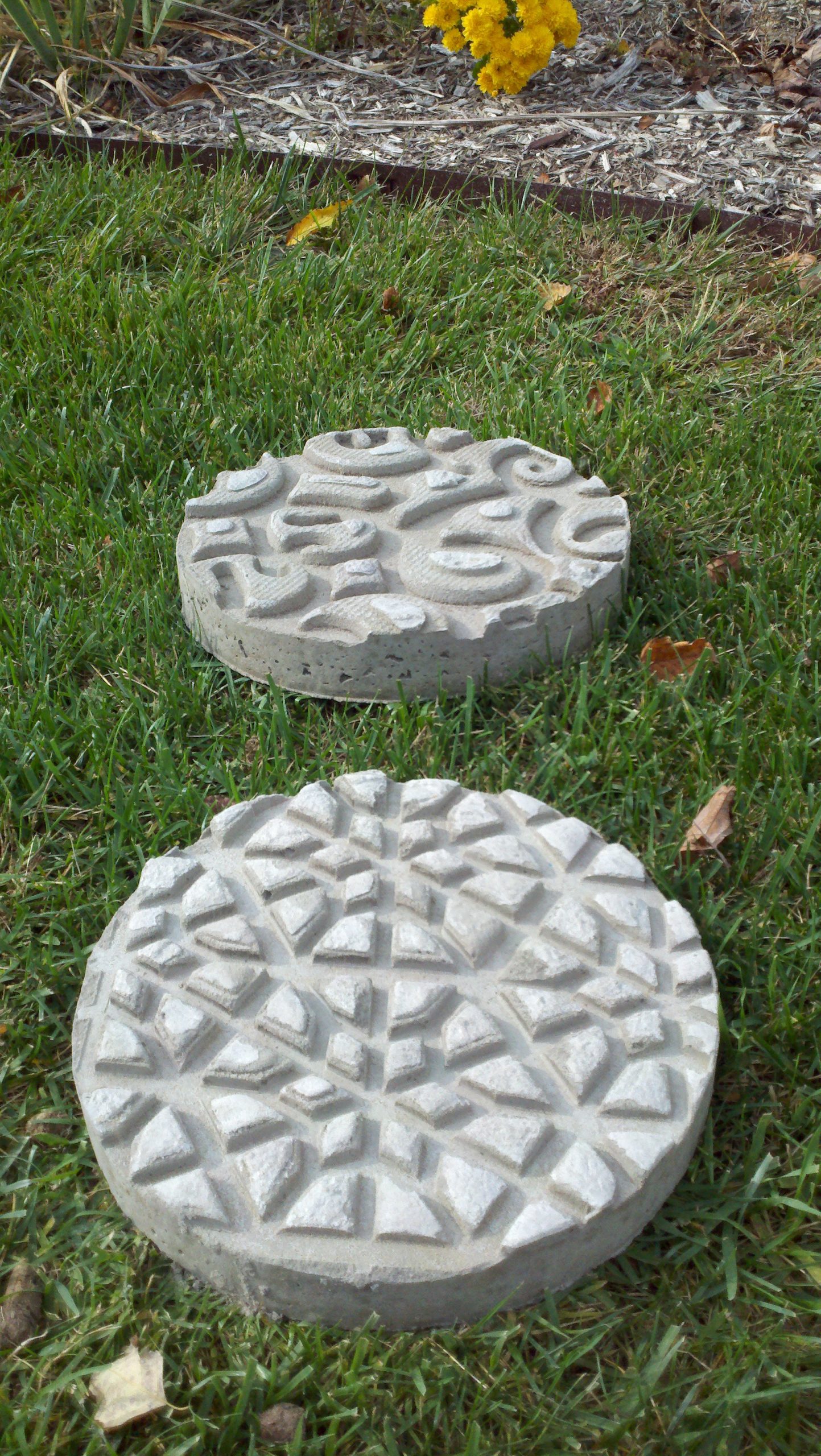 To install these unique stepping stones, you need to get fine concrete, cardboard tubing, a rubber doormat with a fun design, pam cooking spray or oil & paintbrush, chalk pencil, saw, and level board covered in plastic wrap or tin foil.
To install these unique stepping stones, you need to get fine concrete, cardboard tubing, a rubber doormat with a fun design, pam cooking spray or oil & paintbrush, chalk pencil, saw, and level board covered in plastic wrap or tin foil.
Start with cutting the cardboard tubing using a saw into a ring shape. Next up, outline those rings onto the doormat using the chalk pencil. Apply Spray Pam or brush oil over the covered board and the insides of the rings. Place rings on leveled board.
Then pour the concrete mix until it is full. Rest it for 45 minutes. Insert the doormat pieces carefully into the cardboard rings’ tops. Let the concrete remain for 24 to 48 hours or until it has completely set. You may remove the matting pieces with the oil and slide the stepping stone out of the tubing.
4. How to jazz up your garden with Natural Stepping Stones
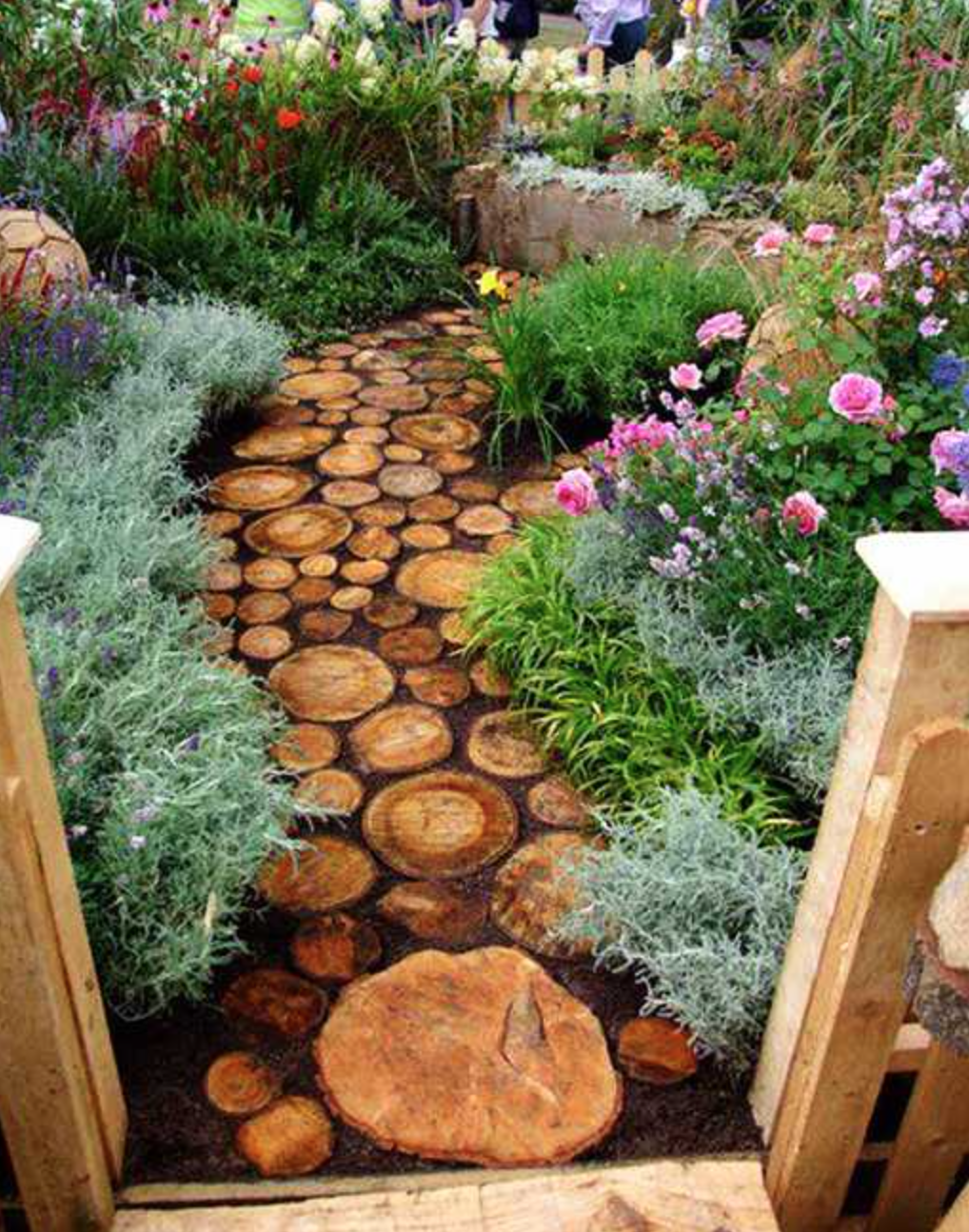 You can achieve the best result by combining pieces from the main trunk and the branches.
You can achieve the best result by combining pieces from the main trunk and the branches.
Before the sand dries, give the stairs a quick coating of weatherproofing paint or liquid (like that used on fences) to make them last longer and prevent them from becoming too slippery. The natural roughness of the material will likely prevent the slippery issue when using a chainsaw.
If the cuts are thicker (about 3–4 inches), you won’t have to worry about rot. Additionally, they could be washed away by the tide if it starts to rain heavily!
3. A Modern Planter Bench for a Tiny Garden
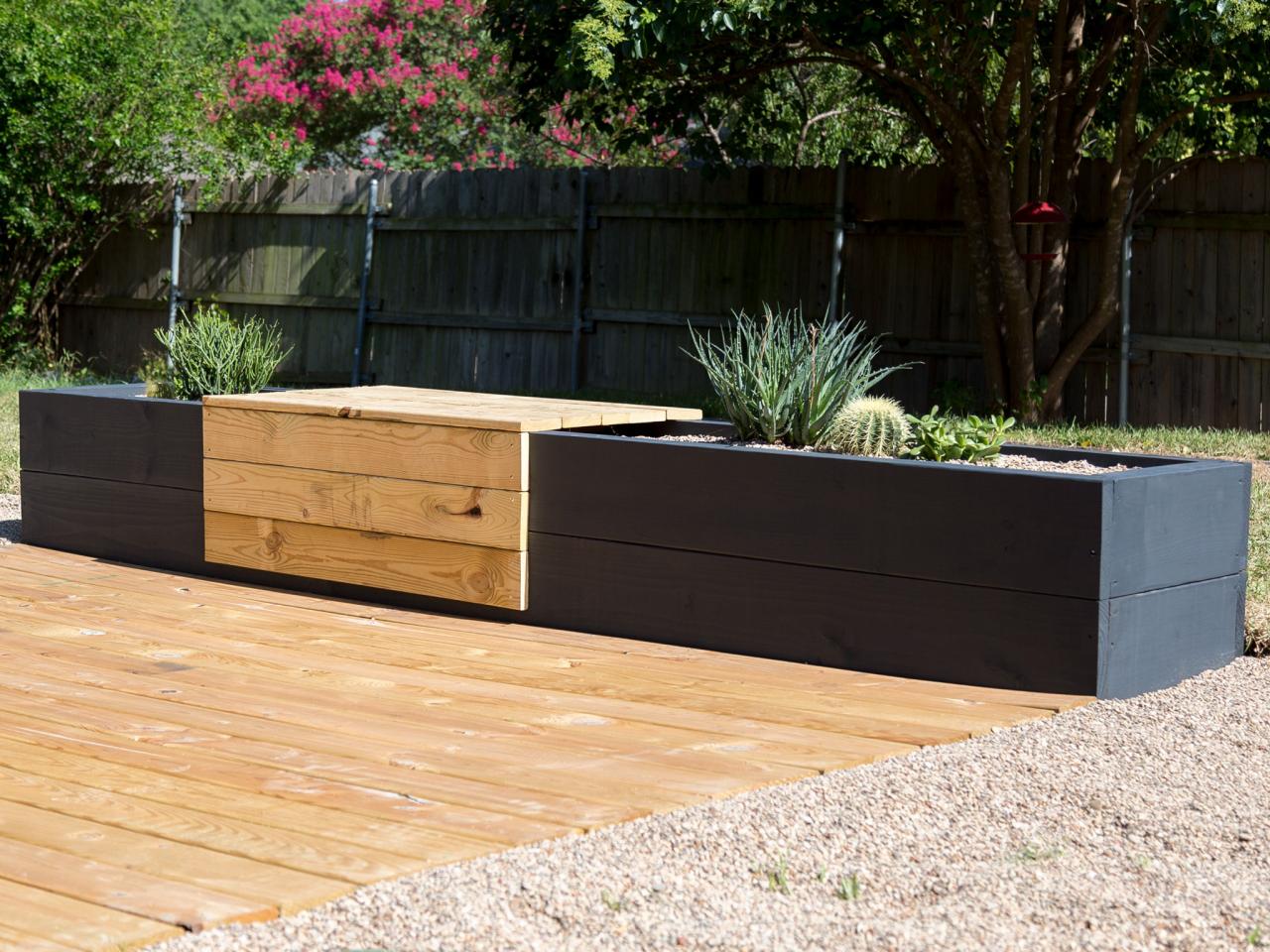 Expand your tiny garden by adding a planter bench. This idea won’t take much of your time. You can finish it in less than a day. However, the bench will last for years to come.
Expand your tiny garden by adding a planter bench. This idea won’t take much of your time. You can finish it in less than a day. However, the bench will last for years to come.
Be prepared with the tools and materials. There are pine wood board, screws, exterior stain clear/ colored, carpenter’s square, measuring tape, pencil, circular saw or table saw, clamps, drill, level, soil, plants, and pea gravel.
First, build the main planter box. It’s like building a block without the top side. Then, create the bench. Fill the planter with soil. Attach the bench to the top area of the block. So, there will be an area covered by the bench. Then, in the uncovered space, you can plant the vegetation.
2. Opt for Drought-Tolerant Ground Cover Instead of a Lawn
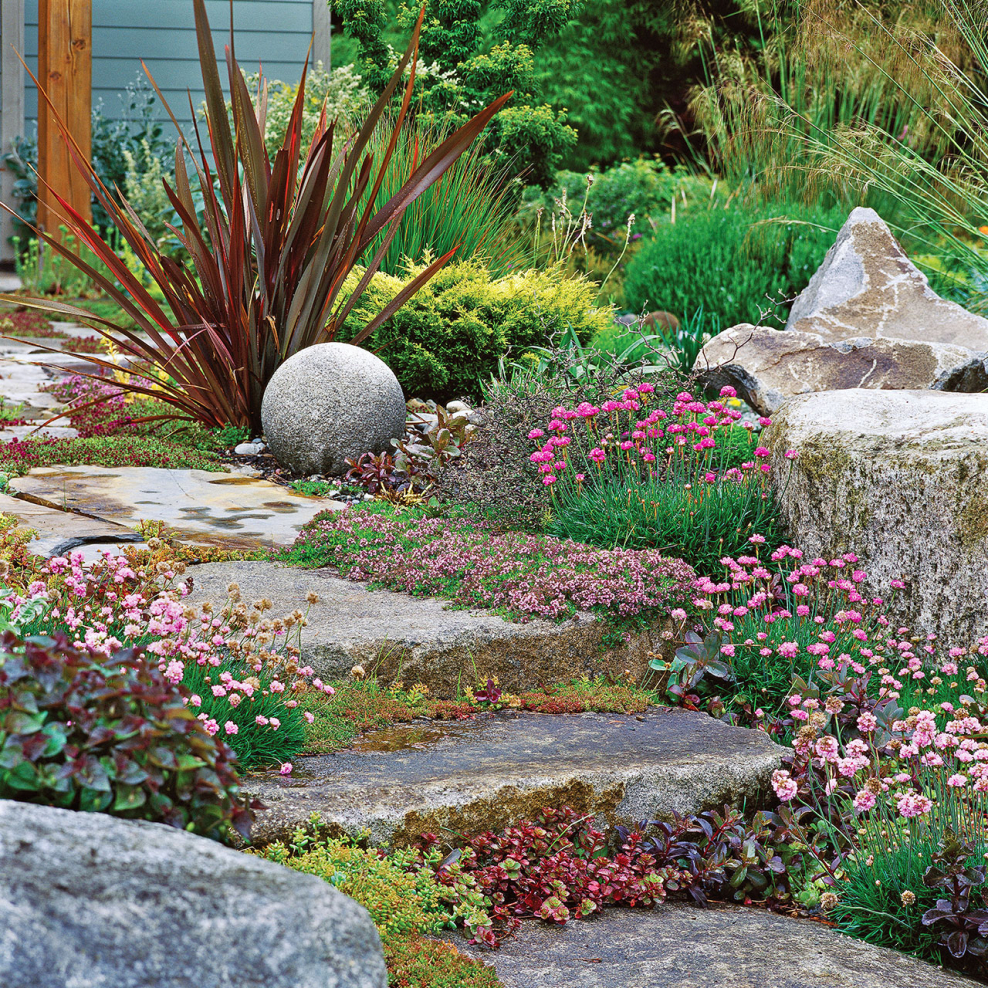 Since lawns need watering to stay green, you can replace them with water-wise plantings. This will help you relax and enjoy the summer sun without worrying about the plants.
Since lawns need watering to stay green, you can replace them with water-wise plantings. This will help you relax and enjoy the summer sun without worrying about the plants.
These are several low-water plants you may consider. You can choose Angelina sedum (Sedum rupestre ‘Angelina’) if you want to jazz up your dry garden with bronze and red foliage.
Another option is Bearberry cotoneaster (Cotoneaster dammeri) if you want to create a wildlife refuge. California fuchsia (Epilobium canum) will attract butterflies and bees, creating a dramatic look to your garden.
1. Complete Your Dry garden with This Quirky Pond
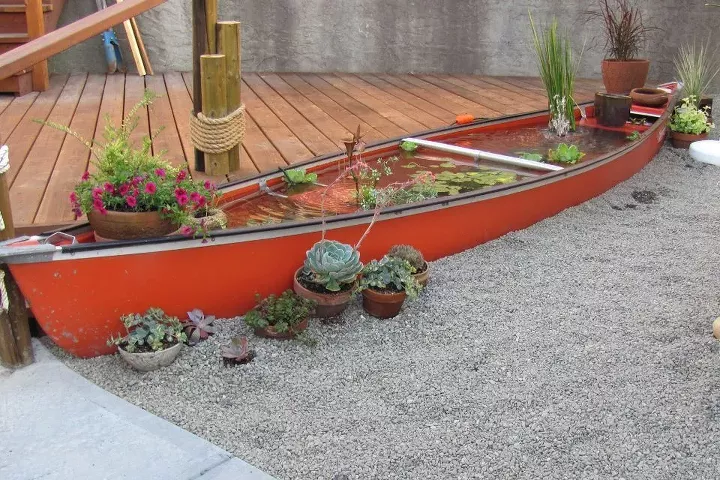 Do you want to add a wow factor to your dry garden? Try this captivating water feature.
Do you want to add a wow factor to your dry garden? Try this captivating water feature.
To create this pond, you need to get an old boat because it is the indispensable material for this project. When purchasing it, make sure it does not leak. If there are holes, fix them. You can add aluminum inside the boat. Or paint it with waterproof paint.
If you want to add plants or fish inside the boat, consider painting the inside with submersible pond paint. It will be a bit costly, though. Still, it will be worth your money.
Once it is ready, place the boat in a shady area to maintain the water temperature inside the pond. Warm water is not good for the fish to survive.
References:
10. Artsyprettyplants.com
9. Gardentherapy.ca
8. Gardeningetc.com, Allaboutgardening.com
7. Safaffect.wordpress.com
6. Decorhomeideas.com, Simphome.com
5. Nancymizelle.wordpress.com
4. Hometalk.com
3. Hgtv.com
2. Bhg.com, Lawnlove.com
1. Diyncrafts.com, Simpledecoratingtips.com